
NZXT is an American manufacturer of computer components and provider of complete systems. The company was founded in 2004 in Los Angeles. The portfolio, which initially only included computer cases, now also includes cooling components, PC accessories, monitors and streaming accessories. In 2017, a service for building complete systems was added under the name BLD. Today, we take a closer look at the new NZXT H5 Flow in this review.
With the NZXT H5 Flow, NZXT takes care of its products and supposedly replaces the popular H510 series. The NZXT H5 comes in the Flow and Elite flavors. Where the Flow relies on a coarse mesh grille in the front, the Elite has a pane of glass in the front instead. Otherwise, not that much has changed in terms of build and design. However, the enlarged fan opening in the lid and the specially angled fan in the front are among the features worth highlighting. Price-wise, NZXT positions the H5 Flow at € 111.36 *. This makes it about 25€ more expensive than the NZXT H510 Flow at the time of this review.
NZXT H5 Flow review: technical details
| Model: | NZXT H5 Flow – All White |
| Case Type: | ATX |
| Dimensions: | 227 mm (W) x 464 mm (H) x 446 mm (D) |
| Weight: | 7.01 kg |
| Material: | Steel, Tempered Glass |
| Color: | Black |
| Front connectors | 1x USB 3.1 Type-C, 1x USB 3.0 Type-A, 1x HD audio |
| Drive bays: | 1x 3.5″/ 2.5″ 1x 3,5″ 2x 2.5 |
| Expansion slots: | 7x horizontal |
| Form Factors: | ATX, mATX, ITX |
| Ventilation: | Front: 2x 120/ 140 mm Rear: 1x 120 mm Lid: 2x 120 mm Bottom: 1x 120 mm |
| Radiators: | Front: 1x 240/ 280 mm (max. 45 mm without fan). Rear: 1x 120 mm Lid: 1x 240 mm |
| Max. CPU cooler height: | 165 mm |
| Max. Graphics card length: | 365 mm |
| Max. Net part length: | 160 mm (with front fan) |
| Cable management space: | 23 mm |
| Price: | € 111.36 * |
| Features: | Dust filter, Cable management, 2x pre-installed fans (NZXT F120Q) airflow, Tempered Glass |

NZXT H5 Flow review: the package contents
NZXT packages the H5 Flow in a plain cardboard box made of brown cardboard, but with small colored accents. These accents are typically purple in color for the manufacturer. Besides some product pictures and the case name, all the technical specifications of the H5 Flow can also be found on the packaging. Inside the box, NZXT has wrapped the midi tower in two blocks of Styrofoam as well as a sheet of plastic.
NZXT stows the accessories in small cardboard boxes attached to the back of the motherboard tray. The accessories include all the important mounting screws, 10 black cable ties and a detailed installation guide. Furthermore, the midi-tower comes with two pre-installed case fans and four pre-installed dust filters.
Exterior impression
Visually, at first glance, there are hardly any differences on the outside compared to the H510 Flow. However, the most important feature of the white version of the H5 Flow is that the case is now completely white. That should certainly please some buyers.
The front panel of the NZXT H5 Flow consists of a large steel plate that is attached to the body via push pins and has been provided with numerous ventilation holes. These should not seem very restrictive due to their size. Additionally, NZXT has placed a magnetic dust filter behind the grille. Behind the dust filter, NZXT installs a modular mounting frame for two 120mm or two 140mm fans or correspondingly large radiators. The lower area of the front is closed and was printed with the manufacturer’s logo.
Probably the biggest change was made to the lid section. Instead of a mounting place for a single 120/140 millimeter fan, there is now finally a ventilation grille for two 120 millimeter fans or a 240 millimeter radiator. A magnetic dust filter has also been placed here for dust protection. NZXT has also placed the I/O panel in the lid. This has an HD audio combo port, a USB 3.2 Type-A as well as a USB 3.2 Type-C port and a power button.
The left side panel of the H5 Flow is made of tempered glass glued to a steel frame. It is attached to the body via push pins as well as a thumbscrew on the back. Similar to the front panel, the side window does not span the entire side. Thus, the bottom quarter is part of the PSU chamber and is made of steel. The right side panel is also made of steel and also has two thumbscrews that remain on the panel. Considering the purchase price of the H5 Flow, the thickness of the side panel is a bit disappointing, though.
At the back, a typical appearance for a modern midi tower is seen. The power supply is positioned at the bottom and above it you can see 7 reusable PCI slot bezels without perforation. Finally, the pre-installed 120 mm fan can be found in the upper area. At this point, it should be noted that there is a bit more space above the fan. This could be helpful when mounting radiators in the lid.
The bottom features two easily removable dust filters with plastic frames. These filter the air for the power supply as well as for the specially positioned front fan. The midi tower gets a secure stand via four stable feet made of plastic, which were additionally covered with a layer of rubber.
Interior impression
When it comes to the interior, NZXT stays true to itself and leaves a lot of things the same. Thus, the interior consists of basically two chambers, which are separated by a power supply cover. The interior is very open and not very restrictive. The motherboard tray is mostly flat and has two large cable management openings. The vertical opening next to the motherboard is covered by a cover, typical for NZXT cases. On the front, NZXT installs a modular mounting frame that is attached by two thumbscrews and should greatly simplify the basic installation of radiators.
However, the bottom area of the NZXT H5 Flow is where things get particularly interesting. In addition to the usual power supply cover, which is made of steel and has two cable management openings, a specially designed plastic element can be seen in the front area, in which a fan has been installed. This sucks in filtered air from below and blows it directly onto the graphics card. You’ll find out what this fan does in the next chapter. At this point, it should also be noted that a 360 mm radiator cannot be installed in the front due to the specially positioned fan.
A look behind the motherboard tray or under the PSU cover quickly reveals that there is a pleasant amount of space for cables here. NZXT has also provided the H5 Flow with four reusable cable management strips. In addition, eyelets for normal cable ties have been positioned everywhere. However, it is somewhat difficult with power supplies longer than 160 millimeters due to the front fan. Speaking of the PSU, it is logically installed under the PSU cover and mounted on several steel lugs without decoupling.
If you want to mount data carriers in the H5 Flow, then you have to settle for something less. The H5 Flow only supports two 2.5″ or one 3.5″ and one 2.5″ data carrier on the back of the motherboard tray. The slide provided for this is made of steel and can be attached without tools via a single thumbscrew. Mounting the data carriers to the frame again requires the use of conventional screws. There is no decoupling.
As we are used to from NZXT, the build quality is on its good level. The NZXT H5 has no sharp edges or paint defects and the feel is good as well. The only exception here is the, for the price, too thin steel side panel on the left side of the case. Since steel is mainly used, there are hardly any color differences, if any at all. For the few plastic elements, the white hue was also hit well, but not perfectly.
NZXT H5 Flow review: component installation
Now we come to the system installation for the NZXT H5 Flow test. For hardware, we’re using a AMD Ryzen 5 1400 on a MSI B350 PC Mate with 16GB Crucial Ballistix Sport LT gray DDR4-2666. The Ryzen is cooled by an LC-Power Cosmo Cool LC-CC-120-RGB and is overclocked to 3.8 GHz (1.25 V). A GTX 1060 6GB from Gigabyte AORUS is responsible for the image output. The power supply is handled by the fully modular LC-Power LC550 V2.31 Platinum with an 80 Plus Platinum efficiency rating.
Installation of all components was very simple and quickly completed, as is customary for NZXT cases. The pre-installed standoffs save time and there is plenty of room to work with. Also excellent is the cable management system that was installed in the H5 Flow. The four reusable Velcro strips are very practical and there are numerous eyelets and cable channels. However, the cover on the front can be somewhat impractical. Depending on how stubborn the power supply cables are, the metal plate could prove to be somewhat of an obstacle. Still, we managed to build a decent system in the NZXT H5 Flow.
In terms of air cooling components, you hardly have any restrictions with the NZXT H5 Flow. CPU coolers can be 165 millimeters high and graphics cards can be a maximum of 365 millimeters long if no radiator is installed in the front. However, the power supply can be a maximum of 160 millimeters long due to the fan in the front area. The options for installing a water cooling system are also limited. A maximum of one 280 mm radiator in the front and one 240 mm radiator in the lid are possible.
The fans installed in the H5 Flow are of the F120Q type. In the white variant, the fans are also completely white in design. The fan consists of nine blades and is designed for high airflow rather than high air pressure. Connection to the motherboard is via a conventional 3-pin connector, with cables equally designed in white. The maximum speed of the fans is around 1300 rpm.
Lastly, we come to the temperatures that were reached in the NZXT H5 Flow test. During the stress test, Prime95 and FurMark were run for 15 minutes at a room temperature of 20 °C. In addition, the test was performed with two different fan speeds.
Scenario |
Temperature |
| CPU: 50% PWM (950rpm) GPU: 50% PWM (1650 rpm) Open-Air Benchtable (no additional fans) |
CPU: 67.0 °C GPU: 57.7 °C |
| CPU: 50% PWM (950 rpm) GPU: 50% PWM (1650 rpm) 2x 120 mm 7V (930 rpm) |
CPU: 68.5 °C GPU: 67.4 °C |
| CPU: 50% PWM (950 rpm) GPU: 50% PWM (1650 rpm) 2x 120 mm 12V (1300 rpm) |
CPU: 64.9 °C GPU: 62.0 °C |
| CPU: 50% PWM (950 rpm) GPU: 50% PWM (1650 rpm) 1x 120 mm 7V (930 rpm) + 1x 140 mm 7V (625 rpm) lower mounting location |
CPU: 68.8°C GPU: 58.4 °C |
| CPU: 50% PWM (950 rpm) GPU: 50% PWM (1650 rpm) 1x 120 mm 12V (1300 rpm) + 1x 140 mm 12V (1000 rpm) lower mounting space |
CPU: 63.6 °C GPU: 57.0 °C |
| CPU: 50% PWM (950 rpm) GPU: 50% PWM (1650 rpm) 1x 120 mm 7V (930 rpm) + 2x 140 mm 7V (625 rpm) |
CPU: 63.3 °C GPU: 59.0 °C |
| CPU: 50% PWM (950 rpm) GPU: 50% PWM (1650 rpm) 1x 120 mm 7V (1300 rpm) + 2x 140 mm 7V (1000 rpm) |
CPU: 60.3 °C GPU: 57.1 °C |
The measurements show that the NZXT H5 Flow does not have an optimal fan configuration from the factory. For example, the specially positioned fan for the GPU may have some benefit with a closed front panel, but there is no benefit with a very open front panel. For example, one or two fans directly behind the front panel reduce CPU and GPU temperatures much better than the single 120 mm fan in the bottom.
Basically, our test system does not reach critical temperature ranges even in this worst-case scenario and with the standard configuration. Thus, the cooling potential is good, but definitely offers room for optimization. It is also a particular pity that you cannot place a 360 mm radiator in the front due to the dedicated fan.
NZXT H5 Flow review: Conclusion
At first glance, the NZXT H5 Flow appears to be a sensible new edition of the H510 Flow. NZXT has finally given the H5 Flow a larger fan opening in the lid and has also revised the cable management system. NZXT has retained the modular fan frame in the front and the steel front panel, which is attached via push pins. Furthermore, dust filters have been placed in all important places, which are easy to remove. Also good on the H5 Flow is the build and paint quality.
Despite the rather high purchase price of over 100€, there are also negative features of the NZXT H5 Flow. The thickness of the right side panel is definitely too thin for a case in this price range. The specially positioned fan in the power supply cover is also questionable. At least in the Flow variant, a fan behind the mesh for the GPU brings better temperatures than the fan in the PSU cover. In addition, NZXT forgoes a mounting option for 360 mm radiators in the front because of the fan.
Another sticking point with the NZXT H5 Flow is the price. NZXT has raised the price by 25€ compared to the H510 Flow. In return, you get the specially positioned fan, a larger fan opening in the lid and, in the white variant, a completely white tower. In return, however, you have to cut back in terms of possible data carriers with the H5 Flow. For these subtle innovations, the 25€ seem to be a hefty surcharge. If you don’t need the larger opening in the lid and don’t exactly want a completely white variant, the NZXT H510 Flow might still be the better alternative at the moment.
NZXT H5 Flow
Workmanship
Structure
Features
Cooling
Value for money
85/100
Compared to the H510 Flow, the NZXT H5 Flow offers sensible innovations and retains good features such as the workmanship, the space or the airflow, although the default positioning is not the best configuration. Unfortunately, NZXT has also raised the price of the NZXT H5 Flow by 25€.







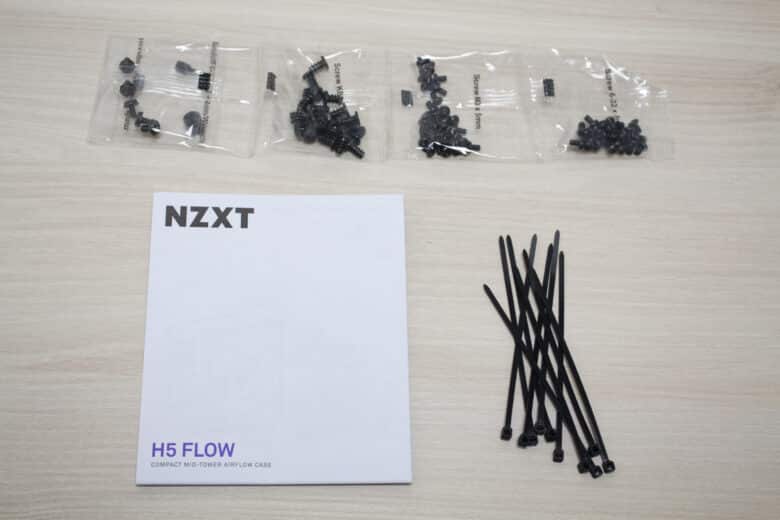







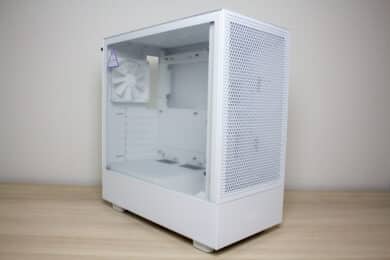

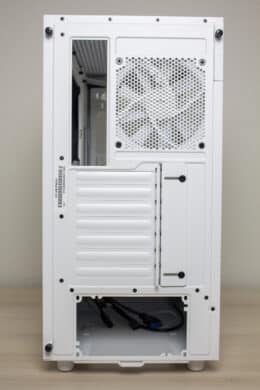

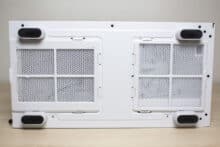
















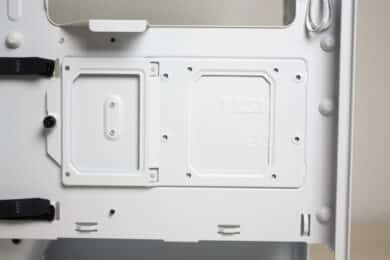



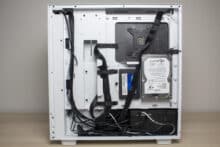




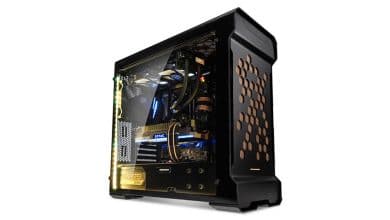

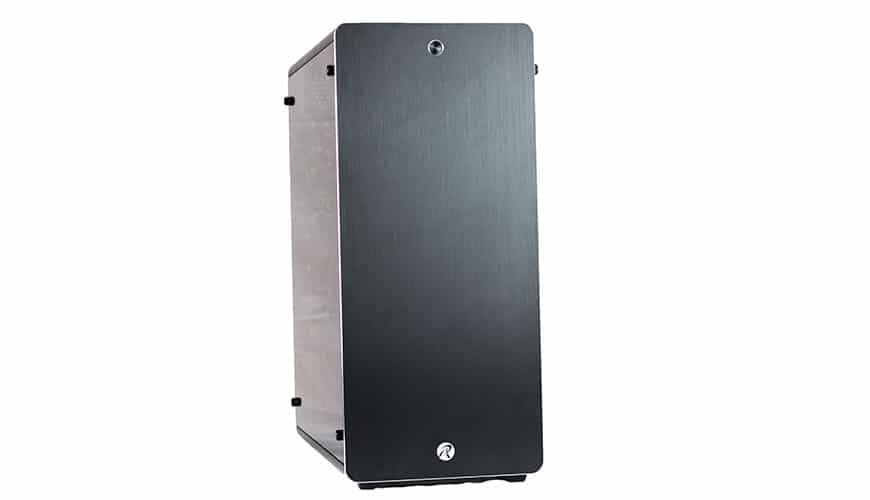
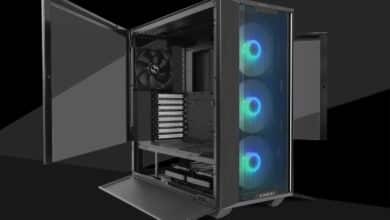
No replies yet
Neue Antworten laden...
Gehört zum Inventar
Beteilige dich an der Diskussion in der Basic Tutorials Community →